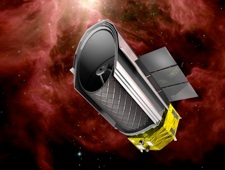


SPICA/SAFARI: looking even Deeper into Space
SPICA/SAFARI will provide next step in Far Infrared Astronomical research capabilities after the Herschel mission. The 3.2-metre diameter mirror of the Japanese space telescope SPICA is almost an exact copy of the Herschel mirror, the major step forward is that in SPICA it is cooled to almost absolute zero (-273 °C). As a result the detectors are no longer ‘blinded' by the thermal radiation coming from the mirror itself, and therefore the SPICA instruments can detect infrared sources two orders of magnitude weaker than Herschel.
After its launch, which is now planned for 2022, SPICA will be able to look even deeper into space than Herschel to investigate, for example, how the first galaxies were formed.
SAFARI is the European 'nerve center' of the Japanese space telescope, and is being developed under the leadership of SRON (PI: Peter Roelfsema).
SAFARI is an infrared spectrometer (35-240 μm) that can fully utilize the sensitivity of the extremely cool mirror to search in the far infrared for the first galaxies but also for ice and water vapor in protoplanetary discs. The space instrument will share the focal plane of SPICA with three other instruments built in Japan and Korea.
The Japanese Space Agency JAXA and the European ESA still have to grant final approval for the mission. This is expected to happen in the spring of 2014. At the same time there is the technological challenge of developing the ultrasensitive TES detectors during the next three years, which will form the heart of SAFARI.
SPICA: A Next-Generation Infrared Astronomy Mission
SPICA is a next-generation infrared astronomy mission, lead by JAXA (Japan) with important contributions foreseen from ESA and a European consortium. With its deeply cooled (< 6 K) large (3-m class) telescope, SPICA will be able to achieve superior sensitivity and high spatial resolution.
SAFARI (SpicA FAR-infrared Instrument) is one of the three instruments planned for the SPICA payload. SAFARI is the FIR imaging spectrometer (30 - 210 μm, spectral resolution of 10 to 10000), next to two mid-infrared instruments, namely the MIR coronograph (3.5/5 - 27 μm) and the MIR camera/spectrometer (5 - 38 μm).

